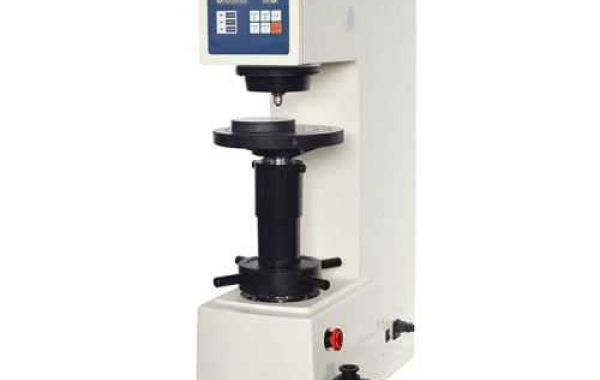The Brinell hardness tester employs a simple but effective principle to measure the material's resistance to permanent indentation. Here's a step-by-step breakdown of the working process:
- Preparation: The initial stage involves preparing the test surface of the material. This ensures a smooth, flat area for the indenter to create a clear and accurate indentation. Cleaning and polishing the surface might be necessary depending on the material and desired precision.
- Force Application:A standardized hardened steel or tungsten carbide ball indenter is pressed into the prepared test surface. This indenter applies a predetermined load (ranging from 13.6 kgf to 3000 kgf depending on the material and expected hardness) for a specific dwell time (usually 10 to 30 seconds). The loading mechanism of the Brinell tester precisely controls the force application.
- Indentation Measurement: After the load is held for the designated dwell time and then removed, a permanent indentation remains on the test surface. This indentation represents the material's response to the applied force.
- Hardness Calculation:The key measurement for determining hardness is the diameter of the indentation. A high-precision optical microscope, integrated into the Brinell tester, is used to measure this diameter accurately.
- Brinell Hardness Number (HB):With the applied load (P in kgf) and the measured diameter of the indentation (d in mm) known, the Brinell Hardness Number (HB) is calculated using a specific formula. The formula is HB = 2P / πD(D - √(D² - d²)), where D is the diameter of the indenter (mm). This formula essentially relates the applied load to the surface area of the indentation, providing a quantitative measure of the material's hardness. Higher HB values indicate a harder material that resisted indentation more effectively.
In essence, the Brinell hardness test measures how much a material deforms under a controlled load from a standardized indenter. The amount of indentation reflects the material's hardness, quantified by the Brinell Hardness Number.







